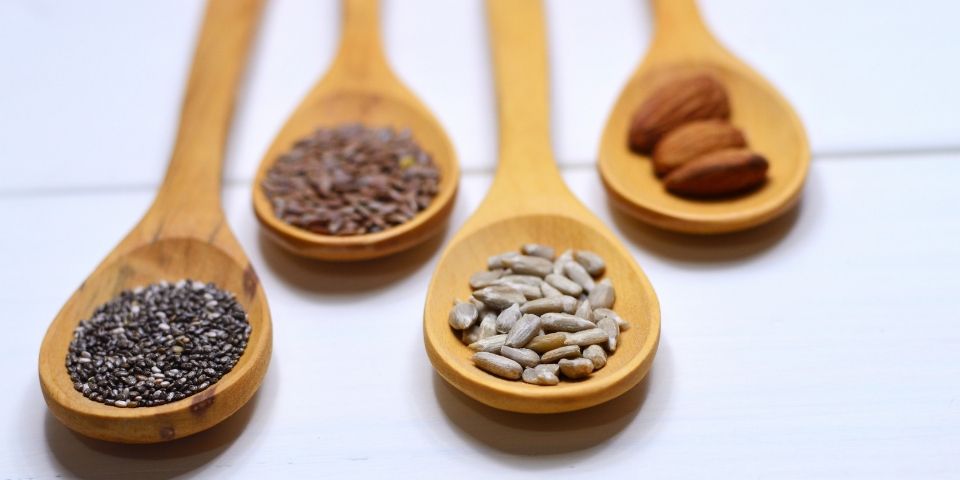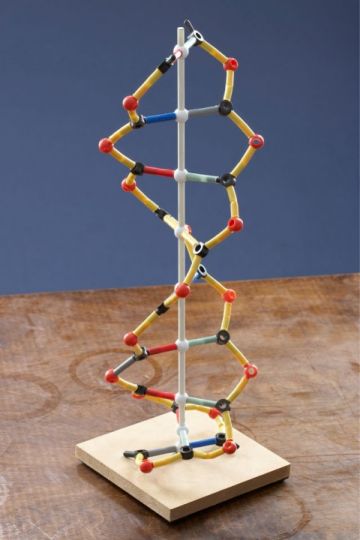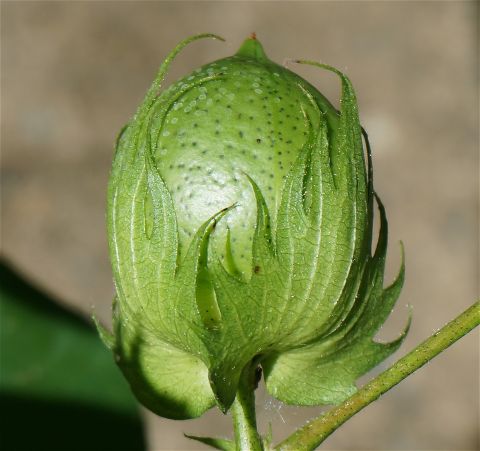Cotton is such a versatile and amazing natural fiber that over the years it has made its way inside into many of the clothes, mattress toppers, pillow cases, bed dressings, and far more than you could possibly think of.
Beyond cotton's rather obvious uses as an essential fabric inside textiles, there are some interesting properties of the cotton plant and its precious fiber's that may surprise you beyond its simple existence in your Kids Bedding.
Here are some key fun facts about cotton you may not be aware of
The word ‘cotton’ is Arabic in origin
‘Cotton’ comes from the Arabic word ‘kutun’ or ‘qutun,’ which refers to any fine fabric. This should not be a surprise since woven fabrics made from the fluffy fiber of the cotton plant first became popular in the Islamic world.
When Europeans adopted cotton from the Middle East, they got access to a great alternative to linen fiber. Softer and easier to work with, many Europeans saw cotton as a great substitute for linen and other fibers.
While wild cotton has historically grown across a very wide geographic range-reaching even very remote island chains like Hawaii-Arab traders have had a long association with cotton.
Cotton cloth is widely thought to have originally come from the area of modern-day Pakistan and India. From here, Arab traders bought and sold bolts of cotton cloth along with spices for distribution in the Middle East and, eventually, Europe.
Given the fact that cotton passed through Arab trading routes before being bought in Europe, the English word for this fiber derives from its Arabic counterpart instead of the Indian term for it-’kapaas.’
The global cotton work force is huge
Whenever you buy anything, your purchase supports an industry and its workers. You support 100 million people from all four corners of the globe when you buy cotton.
Keep in mind that these are not just folks who plant cotton plants and harvest fibers. This number also covers cotton-related jobs-people who transport, process, and weave cotton fibers. Indeed, the cultivation, processing, trade, and transportation network behind the global cotton trade unites many different people of different ethnicities, religions, and political systems.
Humans have used cotton fibers for thousands of years
Just how far back does cotton go? Think 7000 years! It’s use dates back to 5000 BC. That’s how old school of a fiber cotton is. It definitely is not the new kid on the block.
In fact, ancient Greeks and Romans have used cotton for awnings for their buildings and homes, sails for their triremes and other types of boats, and, of course, clothing.
Many of those togas you’d see on ancient Roman frescoes and mosaics were made of cotton.
Before you think cotton usage was a strictly European or Middle Eastern thing, keep in mind that the Aztecs viewed cotton as so precious they used them as legal tender for payments. That’s right, the Aztecs used cotton as money.
Further to the South of ancient Mexico, Peruvians used dark-colored cotton fiber to camouflage their nets for fish.
Archaeologists have found the first use of cotton fiber in the Indus Delta region that covers parts of modern-day Pakistan and India.
There are 50 different natural species of cotton
It’s easy to think of cotton plants as oh-so-generic. After all, if you’ve seen one cotton plant, it’s easy to think that all plants producing cotton fiber would look pretty similar. Not so fast. Cotton plants are so diverse that there are actually trees that produce cotton fibers.

Still, despite the wide diversity of cotton plants found throughout the world, there are only 4 varieties of cotton plans farmed commercially. How come? Only four varieties have the fiber length or oil content levels that justify large scale cultivation and processing.
The Cotton Plant is very complicated genetically
Among the many plants domesticated by human beings for commercial agriculture, the cotton plant is one of the most complicated genetically. While its wild ancestor plant only has 13 pairs of chromosomes, domesticated varieties can pack as much as 26 pairs of chromosomes. Indeed, scientists consider domestic cotton varieties a hybrid of 2 complete sets of wild cotton specie genomes!

What does this mean as far as plant health and cotton agriculture go? The heavy chromosomal density of some varieties prepares them for a wide range of environmental and horticultural stress. They are built to bounce back!
Cotton plants produce fruit!
I’m sure the cotton plant is not the first thing you think about when the word ‘fruit’ enters your mind. After all, it’s easy to think that cotton plants just produce those long thick fibers that can be spun into cloth. Well, think again.
Cotton fibers ‘pop out’ of mature dried pods. Right before drying out and popping, these pods are technically fruit called 'bolls'.
Just in case you’re wondering what the big difference is between fruits and vegetables, here’s a quick breakdown.
Fruits are plant parts that help plants reproduce. They develop from the ‘ovary’ of the plant-the tract where pollen from the male plant fertilizes a pod that would later develop into a seed carrying package.
For example, tomatoes, cucumbers, and mangoes are fruits since they contain seed. Veggies, on the other hand, refer to other parts of the plant that may be edible-leaves, root stock, or stems.
One simple way to frame this difference involves whether the plant will die or get stunted if you eat a specific part. If it won’t, chances are that part is a fruit.
Original cotton crops came in many different colors
If you thought that cotton plants only produce fibers that come in one color-white-you’d be wrong!
In fact, prior to the mass modern industrialized processing of cotton, farmers would routinely plant crops that yielded different colors.
These earlier varieties yielded tan, red, green, pink, and brown fibers. There was even a variety that produced blue cotton fibers.
Sadly, non-white or non-off-white cotton varieties aren’t commercially viable today because of the length of their fibers.
Modern commercial cotton processing require long fibers. These non-white varieties strands were simply too short for fabric spinning on an industrial level.
Cotton is so absorbent that it can soak up liquid thirty times its weight
Cotton balls and cotton buds are quite common in hospitals for a very good reason. If you are looking for a handy dandy fiber that can soak up lots of liquid very quickly, you don’t have to look further than cotton. It’s light, easy to pack, and can absorb liquids up to 30 times its weight. What’s not to love?
Cotton is so efficient at absorption and soaking up a wide variety of liquids that researchers are actually looking into how cotton can be used to clean up oil spills in the open ocean and coastlines.
Cotton actually gets tougher the wetter it gets
Generally speaking, most substances get weaker when they are exposed to moisture. Water, being the universal solvent, weakens bonds in most substances. No wonder, H20 makes for a great cleaner. You just spray water on any tough dirt or stain and it will soften up enough for easy wiping. Not so with cotton.

Cotton actually gets stronger as its moisture content increases. This is due to the molecular structure of its fibers.
Cotton fibers have crystalline sections which are strengthened by hydrogen bonds when cotton gets wet. The moisture being absorbed by cotton fibers don’t make it through the crystalline areas. Otherwise, the water molecules would loosen up the crystalline fiber sections and weaken cotton.
No wonder, cotton’s cellulose fibers don’t weaken when wet compared to fibers like rayon. Unlike synthetic fibers which are non-responsive to water, cotton gets stronger when exposed to moisture.
Cotton seeds are very salt-resistant
Wild cotton plants have been wafted by wind currents over vast ocean expanses throughout the centuries. In fact, wild cotton plants have been found everywhere from distant Galapagos Island (these remote islands’ weird fauna inspired Charles Darwin to describe an evolutionary model for biological diversity) to wide island expanses in the Caribbean.
Cotton plants have even been found in that remote island chainsmack dab in the middle of the Pacific Ocean-Hawaii!
Wild cotton would not have had such a wide ranging footprint if it were not for its very hardy seed coating.
Most other plants’ seed coating are easily penetrated by salt water. Through osmosis, sea water leeches out nutrients and water from seeds while leaking in salt.
No wonder most plants’ seeds don’t travel well over long stretches of salt water bodies.
Cotton seeds are heavily used in industrial pharmaceutical and chemical production
Given how tough and resilient cotton seeds need to be in order to travel wide distances in the wild, it’s no surprise that these little seeds are packed with so much oil.
Only 4 varieties of cotton plants are used for fiber production as other varieties produce lots of seeds but not so much fiber.
Due to the overall high oil content of cotton seed, these other varieties are farmed solely for oil extraction.
As more and more Americans become health conscious, cotton seed oil has emerged as a great alternative to the usual ‘go to’ cooking oil in the United States-corn oil.
Cotton seed oil is packed with health boosting and disease preventing antioxidants, cotton seed oil is also loaded with healthy polyunstaturated fats. Totally free of cholesterol, an increasing number of consumers are turning to cotton seed oil for frying, margarine and salad dressing.
In terms of industrial uses, cotton seed oil is no slouch either. It has long been used as the base material for candles, paint, rubber, pharmaceutical products, cosmetics, emulsifiers, and soap. It is even used to create water proof coating for a wide range of products.
If the long list above isn’t impressive enough, cotton seed is also a livestock feed powerhouse.
The great thing about this wonder seed is that once its oil is extracted, it can be further processed and turned into livestock feed.
The meal by-product left over when oil is extracted from cotton seed makes for great animal feed. Either the meal is fed directly to animals or it is added to soy meal or cracked corn for a more complete livestock feed ration.
Even the fiber-rich hulls of processed oil-type cotton seeds are ground up and mixed into livestock feed.
US currency is made up of around 75% cotton
The American Paper currency is a blend of 75% cotton and 25% linen giving the currency a distinct look and feel.
If you have ever had to deal with water soaked paper, you’d know that paper is not all that durable. It’s fiber tissue’s molecular structure is not tight or strong enough to support hardy crystalline sections.
When moisture enters paper’s fibers, it starts to weaken and, depending on the volume of pulp in the paper, quickly fall apart.
Most of the world’s government treasuries use cotton as the base for their ‘paper’ money because cotton gets stronger when it gets wet.
Moisture doesn’t end up lubricating the strands of its fiber structure and it is able to keep out a large amount of moisture. Quite paradoxical considering how good of an absorbent non-spun or loose cotton is.
Another reason why cotton is used for paper money is its ability to absorb and retain waterproof dyes. Money that washes out quickly (despite staying in one piece) is worthless.
The term ‘cottoned on’ comes from cotton’s great ability to blend with differing fiber options
“Cottoned on” is a term for the ability to understand easily. “Cottoned to” refers to a person’s ability to get along. Both these phrases may trace back from the fact that cotton is one plant fiber that is very easy to dilute. Cotton can easily be mixed with a wide range of both natural and synthetic fibers.
Keep the 13 fun facts above in mind the next time you put on, slip on, or fold a piece of cotton into your wallet.




